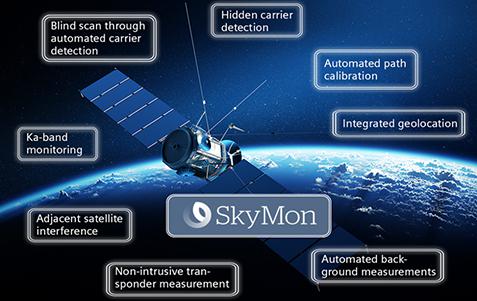Communication satellite monitoring system
Introduction to communication satellites
Communication satellites are the space part of satellite communication systems. A geostationary orbit communication satellite can cover about 40% of the earth's surface, enabling any ground, sea, or air communication stations in the coverage area to communicate with each other at the same time. Three geostationary orbit communication satellites distributed at equal intervals over the equator can realize global communications except for parts of the two poles. Communication satellites are one of the earliest and most widely used satellites in the world. Many countries such as the United States, the former Soviet Union/Russia and China have all launched communication satellites.

Tasks of the communication satellite monitoring system
The main tasks are: tracking and measuring the satellite during satellite launching, and controlling it to accurately enter the designated position of the geostationary orbit; perform satellite positioning after satellite positioning. In the orbit test, after the satellite is operating normally, the orbit position correction, attitude maintenance and maintenance of each communication subsystem are carried out on it. Taking international communication satellites as an example, the satellite monitoring system is equipped with a telemetry, tracking, control and monitoring station (TTC&M), also known as a measurement and control station, which is composed of the satellite control center (CSCC) and the orbital operation department (OOS). The monitoring system implements launch tracking control and fixed-point monitoring and control of communication satellites, so that they are always in normal operation.
The international satellite communication system has 6 TTC&M stations, which are located in Krasburg, Germany, Fozino, Italy, Beijing, China, Perth, Australia, and Hawaii. Happy Maru. Six TTC&M stations form a global monitoring network to monitor and control 15-19 communication satellites distributed in the three oceans.
TTC&M station is equipped with C-band and Ku-band full-performance antennas. These antennas can move in a large range, track and control satellites before orbiting, and can also point to different satellites to complete each A variety of monitoring and control tasks (mainly fixed-point monitoring and control, and satellite attitude monitoring and control). The TTC&M station receives the beacon signal and various telemetry signals sent by the satellite telemetry transmitter, demodulates and processes all the data to the SCC located at the headquarters of the International Satellite Organization in Washington. Through these data, SCC can monitor the operating status of the satellite in real time. If the satellite attitude or a certain subsystem needs to be corrected or controlled, the SCC will give corresponding instructions and send them to the satellite via the TTC&M station. The instruction must be repeatedly verified before it can be executed. The procedure is: SCC sends an instruction to the satellite via TTC&M. After receiving the instruction, the satellite stores the instruction and sends the instruction content back to the ground via the telemetry transmitter; the TTC&M station receives the satellite transmission. The content of the returned instruction is then sent back to SCC. SCC will check the instruction sent back by the satellite with the original instruction. After confirming that it is correct, it will issue an "execute" instruction, and then send it to the satellite via the TTC&M station. After receiving the "execute" instruction, the satellite executes the previously stored instruction content.
OSS is mainly responsible for processing satellite tracking and ranging data, based on these data can determine the position of the satellite in the orbit. The distance measurement technology can also obtain the antenna pointing data required by each earth station and the forecast data of the solar transit interference in advance. OSS is also responsible for the statistics of remaining fuel on the satellite and data analysis after satellite position adjustment.
Latest: Fujitsu fi-6130
Next: Distributed optical fiber temperature measurement system








